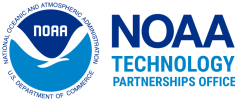CRADA Partnerships Frequently Asked Questions
The standard CRADA template has already been vetted and approved to ensure the rights of the U.S. Government are fully protected. As a result, the CRADA is relatively simple to create and approve. Once completed, the CRADA enables the partnership to move forward without any confusion over who owns the end product and how it can or cannot be used. This simple document, when signed at the beginning of a new collaborative project, simplifies dispute resolution in the future and can save the lab and researcher endless hours of reconstructing conversations and compiling documents should a conflict arise between the partners.
The documents are similar; however, the NOAA CRADA has been written with intellectual property rights in mind from the beginning. Therefore, future patenting, licensing, and similar activities can be expedited through the use of a CRADA. MOUs may not contain details regarding ownership of intellectual property, which can pose difficulties later.
CRADAs are not procurement vehicles. The CRADA does not allow for the transfer of US Government funds to an outside party.
For NOAA Staff: Contact the Tech Transfer team at NOAA.T2@noaa.gov to open a new file and receive the latest CRADA template. Templates change, so please do not use old versions.
For Businesses: To enter into a CRADA with NOAA, you must first have a Lab or Program that is interested in collaborating. We recommend networking at scientific conferences or contacting a lab or program directly to discuss possible collaborations. Information on your local NOAA facilities can be found on the NOAA in Your State web page.
CRADA language in the NOAA template has already been approved, so the review process can be expedited. New CRADAs must undergo a legal review by the company and a quick review by TPO’s General Counsel Rep before they can be signed.
The agreement can be drafted and signed by the Lab/Center Director. The approval authority for each CRADA depends on the executing Line Office, but is generally the Assistant Administrator.
Yes! Multi-Lab CRADAs are encouraged where there is a single company that wishes to work across different NOAA mission areas and labs. These NOAA-wide CRADAs take a bit longer to finalize, but ultimately save the company time in trying to coordinate across the agency.
Please contact us a NOAA.T2@noaa.gov to discuss options for a NOAA-wide CRADA.
The NOAA CRADA template changes frequently, so we recommend reaching out to us at NOAA.t2@noaa.gov to request the current version of the template.
The CRADA template has been pre-approved by the NOAA General Counsel. If you choose to modify the legal terms of the agreement, it will extend the time to review and approve the agreement. For that reason, we strongly recommend against making any changes to the template itself.
It is also important to note that certain provisions in the CRADA are required by law and may not be changed.
CRADAs are designed to be quick-to-implement, but the process of developing a Statement of Work, reviewing the document, and obtaining signatures across two organizations can vary greatly depending upon schedules and how motivated the parties are. On average a CRADA with NOAA takes between 1-2 months to fully execute, but some have come in under a month.
If the partners can iron out the basics of their high-level Statement of Work early, the rest of the process is usually pretty quick. The biggest delay usually happens when the partner tries to modify the NOAA CRADA template. This triggers a much more detailed back and forth legal review, which can add a lot of time.
Yes. For accounting purposes, a funded CRADA is treated as a reimbursable agreement. The funding would serve to offset the cost to the NOAA lab/science center for staff time, resources, and other contributions.
When executing a funded CRADA, the Statement of Work will need to indicate the amount of funding provided, what costs will be offset by the funding, and the payment schedule.
The TPO does request short annual reports on the status of the CRADA from the partners and a final report at the end of the CRADA period. These reports are used to ensure we are meeting your needs and to determine the overall success of the partnership.
Some partnerships result in measurable economic benefits, such as product sales, so the TPO will also seek to track and report those data points as well.
Typically, NOAA CRADAs have a duration of 1-5 years, depending upon the scope of the R&D project.
Yes. The CRADA may be amended at any time. If the amendment is non-substantive (e.g. – changing the composition of the project team or PI), the amendment may be signed by the Lab Director without legal review.
For extensions, the parties will need to indicate a statement of need in their final report to obtain approval. NOAA General Counsel will review the statement of need to ensure the CRADA is not being used to obtain services in place of a procurement.
No. Data from a CRADA partnership may help to inform your market research, but it doesn’t eliminate the need to evaluate a broad selection of sources.
Generally no, but it is possible assuming the scope of work for the funded project and the CRADA project are clearly distinct and separate. No federal funding can go to the execution of CRADA work by the private partner, so any grant or contract funding must be used for separate activities.
